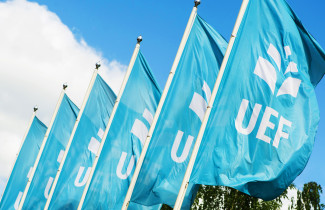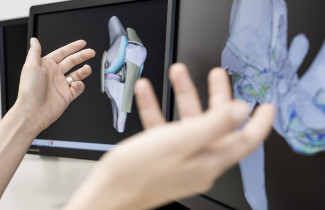ABSTRACT
Osteoarthritis (OA) is a common disease that causes degeneration of articular cartilage and other joint tissues. The progression of OA can lead to severe pain and immobility. Unfortunately, clinical imaging techniques are more suited to diagnosing the late stages of the disease rather than detecting the early signs of degeneration. Therefore, new non-invasive imaging methods are urgently needed that could assess the compositional changes related to incipient OA in joint connective tissues.
Quantitative MRI parameters, such as relaxation time constants or diffusion, are among the most promising methods for the non-invasive assessment of early changes evoked by OA. However, many of these quantitative parameters have significant shortcomings, such as long imaging times, very low sensitivity or requirement of special hardware, which mean that they are inapplicable for clinical imaging. Furthermore, a significant issue limiting the use of quantitative MRI for OA diagnostics is the rapid transversal relaxation often observed in the musculoskeletal tissues, reducing the signal available from these tissues. This issue can be overcome by applying the ultra-short or zero echo time methods. Interestingly, when using these methods, a previously unseen hyperintense signal has been observed at the osteochondral junction. However, the exact origin of this signal has not been comprehensively studied, and even its location in the osteochondral unit has remained debatable as both deep uncalcified cartilage and calcified cartilage have been proposed.
The hypotheses of this thesis were that quantitative susceptibility mapping (QSM) could overcome at least most of the problems regarding quantitative MRI assessment of articular cartilage and more specifically, that it would be sensitive to the changes in the properties of the extracellular matrix of articular cartilage. Regarding the hyperintense signal at the osteochondral junction, it was hypothesized that this signal is located in the deep uncalcified cartilage instead of the calcified cartilage. Moreover, it was hypothesized that the hyperintense signal would be in part generated by and dependent on the susceptibility differences between the uncalcified and calcified cartilage.
All experiments were performed by imaging ex vivo osteochondral samples of animal and human origin in a preclinical 9.4T MRI scanner. When evaluating QSM in the assessment of articular cartilage, it was compared T2* relaxation time mapping and also correlated with reference parameters, such as biomechanical properties or collagen network organization in articular cartilage. Furthermore, the potential added value by combining the QS- and T2*-mapping for diagnosis of cartilage degeneration was studied. To localize the hyperintense signal at the osteochondral junction, co-registration was performed between SWIFT-MRI, high-resolution μCT and the histological images. T1 relaxation time mapping and variable bandwidth SWIFT imaging were utilized to reveal the potential causes of the hyperintense signal.
The results of the thesis indicate that native QSM has a limited ability to detect cartilage degeneration and seems to lack sensitivity compared to the T2* relaxation time mapping. However, the combination of the information obtained with both methods (available from the same measurement) improves the results over those gathered by using either of the methods individually.
The results using SWIFT-MRI indicated that the hyperintense signal at the osteochondral junction is completely observed in the deepest parts of non-calcified articular cartilage instead of the calcified cartilage or subchondral bone. It was observed that the region of the hyperintense signal in the deep layer had a much shorter T1 relaxation time than the superficial cartilage. Moreover, the multiple bandwidths test demonstrated that the hyperintense signal was blurred at lower receiver bandwidths. These results indicate that the hyperintense signal is at least partially caused by the fast T1 relaxation and that the susceptibility differences between the uncalcified and calcified cartilage have a role in generating the signal. As the susceptibility effects are a potential cause of the hyperintense signal, the combination of SWIFT and QSM could potentially be used to clarify this signal better.
The doctoral dissertation of MSc Olli Nykänen, entitled Magnetic resonance imaging of the osteochondral unit: studies using quantitative susceptibility mapping and sweep imaging with fourier transform will be examined at the Faculty of Science and Forestry on the 4th of September, Kuopio Campus and online. The opponent in the public examination will be Associate Professor Chunlei Liu, University of California, USA, and the custos will be Associate Professor Mikko Nissi, University of Eastern Finland.



